Summary
The aim of the meeting was to present the characteristic features of foster care and adoption and to show that – though they are often confused and mistaken by the public at large – from the legal point of view they constitute two different forms of care over children. It is necessary to have a clear picture of the distinction between them to apply them correctly.
Both institutions undergo changes; therefore, the main directions of those changes were sketched and it was shown to what extent the transformations allow to keep the essence of the institutions intact, and to what extent they push towards formation of a new identity of the institutions.
Identity implies having awareness of a set of shared features and a sense of unity as well as proving to others and oneself one’s self-identification with particular features of social reality. In this lecture, identity was understood as a set of features which enabled to identify foster care (with a focus on foster family) or adoptive family as well as a set of legal formal criteria which had to be fulfilled in order to set up either foster family or adoptive family.
Perpetuation of identity does not rule out a possibility of its evolution or modification. However, in the case of such sensitive and serious institutions as foster care and adoption, excessive enthusiasm towards new ideas and reforms of the institutions should be curbed. Not all changes, in particular legal changes, should be introduced; they all need to have some axiological, social or demographic justification and should stem from some value system.
The main similarity between foster care and adoption can be seen in the fact that both institutions are considered when a child is to be removed from home and family and placed in out-of-home care. However, they serve to respond to different social problems; therefore, they have different legal framework.
When defining foster care institutions, the following characteristics should be mentioned:
- Temporal nature – a child is placed in foster care for a time being (until a family crisis is resolved) and then the stay in foster care should be terminated.
- Weak legal link between foster care institution and the ward/foster child
- Forms: institutional (foster care/child care home) and family (foster family, small foster care home)
- Professionalization and specialization of foster care (professional foster families, including resocialization families, emergency care, therapeutic, for underage mothers)
- Placement of a child in foster care by virtue of the courts’ intervention into parental authority
- State supervision over establishment and functioning of foster families and foster care institutions
- The primary philosophical principle underlying the system and mechanism of foster care is subsidiarity.
The main direction of evolution of foster care, launched in 1999, is from keeping children removed from families in foster care till they become of age, coupled with a lack of assistance for families, to erecting a system of foster care that would be subsidiary towards the ward’s family and geared up for reintegration of the ward with his/her family.
The main downsides of foster care in Poland involve the quasi-adoptive mentality of foster family, lack of social workers, a widespread reluctance towards foster child’s biological family, pressure of local administration to promote adoption.
As regards the identity of adoption, since Roman times it was meant to imitate natural relations – a child becomes a legal child of the adoptive family; so by this assumption, adoption is to last “forever” (be irresolvable).
Hence, only a child can be adopted, and for its good only. The main prerequisite for adoption is that none of the biological parents exercises legal supervision over the child (they are either dead, deprived of parental authority, or they relinquished their right to the child).
The model candidates for adoptive parents should be able to provide the child with conditions for upbringing close to the model ones from the point of view of the child.
Till 1990s the dominant approach to adoption assumed the principle of adoption secrecy. Since then much has changed under the influence of the perception of human rights, in particular the right of every child to know one’s roots. A respect for this right shown by the adoptive family implies a possibility that in the life of adoptive family biological family may appear.
Artificial procreation enables an experience of parenthood almost from the beginning (in vitro) and from a birth of a child (surrogate motherhood) conceived from cells of parents who desire to have a child. This will rule out the option of adoption for those people who wish to experience parenthood from the beginning also in the genetic sense. Adoption will remain an option for those who will reject artificial insemination for ethical reasons.
More and more countries allow adoption by same-sex couples. This approach promotes the view according to which adoption shall serve first as a way of fulfilling needs of specific groups of adult people, and only then the good of the adopted child. The principle of the good of a child, which till the late 20th C. laid at the foundation of state adoptive legislation and the twentieth century international conventions, is marginalized.
As regards foster care and adoption, their specific characters require much assistance form such fields as psychology, pedagogy and social work. When giving legal framework to these institutions, it is necessary to take into account how children experience their stay away from family, how adoptive or foster care parents treat adoption or taking in a foster child, or how the separation affects biological parents of the adopted child.

